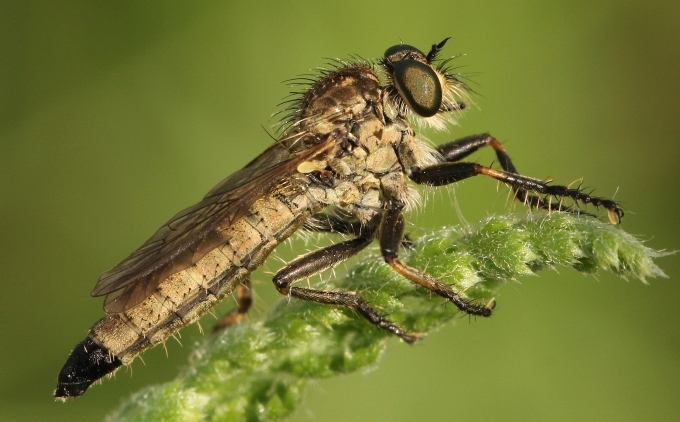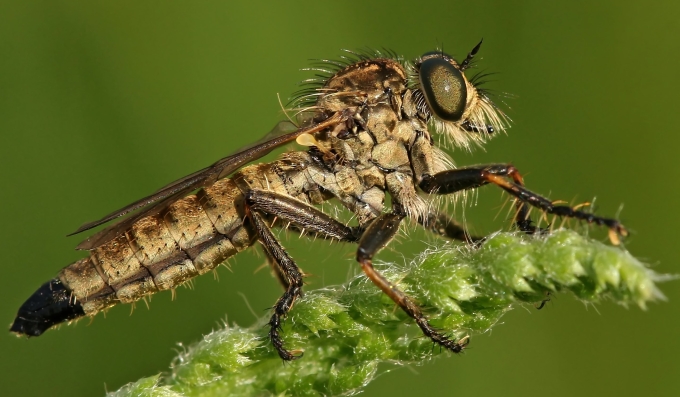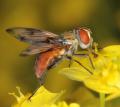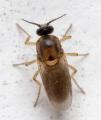Diptera.info :: Family forums :: Asilidae Forum
|
Dysmachus? From Hungary
|
|
| piros |
Posted on 19-12-2015 16:34
|
|
Member Location: Szeged, Hungary Posts: 1805 Joined: 04.01.12 |
Found on 19-05-2013, near Tatárszentgyörgy, about 45 km S-E of Budapest, in a lush meadow. Is it possible to say something about ist identity? Thank for any help in advanve! Greetings, Henrik piros attached the following image:  [198.17Kb] |
|
|
|
| piros |
Posted on 19-12-2015 16:35
|
|
Member Location: Szeged, Hungary Posts: 1805 Joined: 04.01.12 |
2.
piros attached the following image:  [172.6Kb] |
|
|
|
| Piluca_Alvarez |
Posted on 20-12-2015 09:55
|
|
Member Location: Madrid, Spain Posts: 2431 Joined: 06.11.10 |
Hi, Henrik I only can confirm it is Dysmachus sp. indeed. And a female. I shall try to go further, but I need to check for that. In the meanwhile, Reinoud or somebody else might be able to say more... Good luck!  |
|
|
|
| piros |
Posted on 20-12-2015 10:26
|
|
Member Location: Szeged, Hungary Posts: 1805 Joined: 04.01.12 |
Thanks a lot, Piluca! I'll wait... Have you seen the thread about an Amictus from Rhodes?  http://diptera.info/forum/viewthread.php?thread_id=70996 Kind regards, Henrik |
|
|
|
| piros |
Posted on 20-12-2015 11:15
|
|
Member Location: Szeged, Hungary Posts: 1805 Joined: 04.01.12 |
Of the Dysmachus sp known from Hungary, I could exclude several, based on pictures in the Internet (even though it is risky to do so...) The remaining two are D. bimucronatus and D. cohleatus. Of these, D. cochleatus is the more likely candidate, since the other appears to prefer rather warm and dry habitats.
Edited by piros on 20-12-2015 11:15 |
|
|
|
| Piluca_Alvarez |
Posted on 20-12-2015 15:26
|
|
Member Location: Madrid, Spain Posts: 2431 Joined: 06.11.10 |
No, I haven't!! Going to have a look after working on this one  About the Dysmachus, female genitalia of D. bimucronatus looks nothing like the one of your fly and D. cochleatus is very similar, which is a big help!  |
|
|
|
| piros |
Posted on 20-12-2015 16:37
|
|
Member Location: Szeged, Hungary Posts: 1805 Joined: 04.01.12 |
Thanks a lot, I really appreciate your help and interest! It should be D. cochleatus then, I can't really see other possibilities, especially since this sp. was quite frequent at the place, so unlikely to be something "exotic" for the country  Kind regards, Henrik Edited by piros on 20-12-2015 16:37 |
|
|
|
| Quaedfliegh |
Posted on 21-12-2015 00:05
|
|
Member Location: Tilburg Netherlands Posts: 2219 Joined: 18.05.10 |
Nice to see this one... besides the fact that the ovipositor looks different, D. bimucronatus has entirely black legs. Another option would be D. bifurcus (also red based tibiae and present in Hungary)which has a similar ovipositor but still different! D. cochleatus is your best option! Still, i would add a cf until you have a male with it.
Greetings, Reinoud Field guide to the robber flies of the Netherlands and Belgium: https://www.jeugdbondsuitgeverij.nl/product/field-guide-to-the-robberflies-of-the-netherlands-and-belgium/ https://www.nev.nl/diptera/ |
| piros |
Posted on 21-12-2015 00:20
|
|
Member Location: Szeged, Hungary Posts: 1805 Joined: 04.01.12 |
Thank you for your input! I found pictures of femele D. bifurcus, but thought is was different... Kind regards, Henrik |
|
|
|
| Jump to Forum: |













